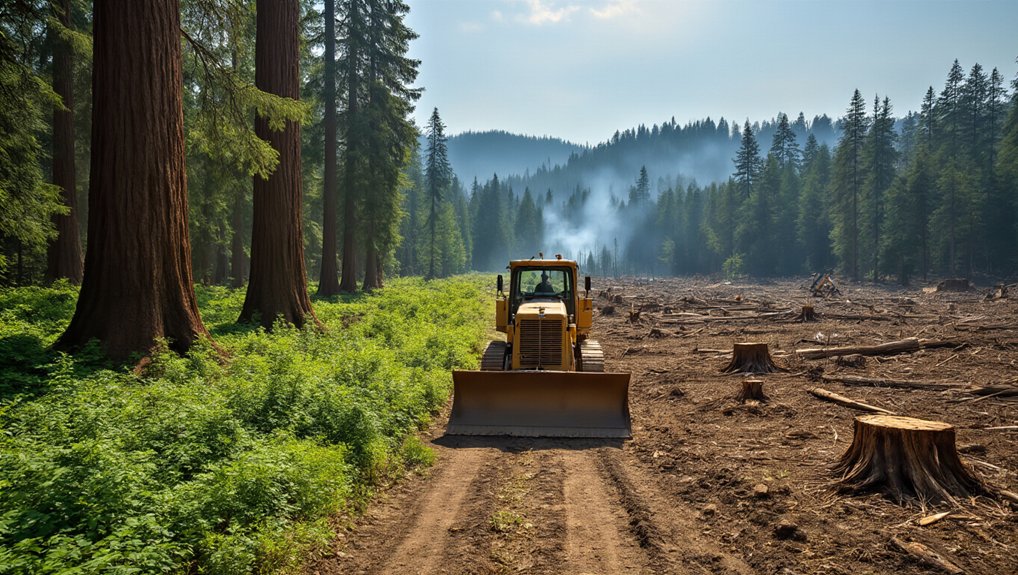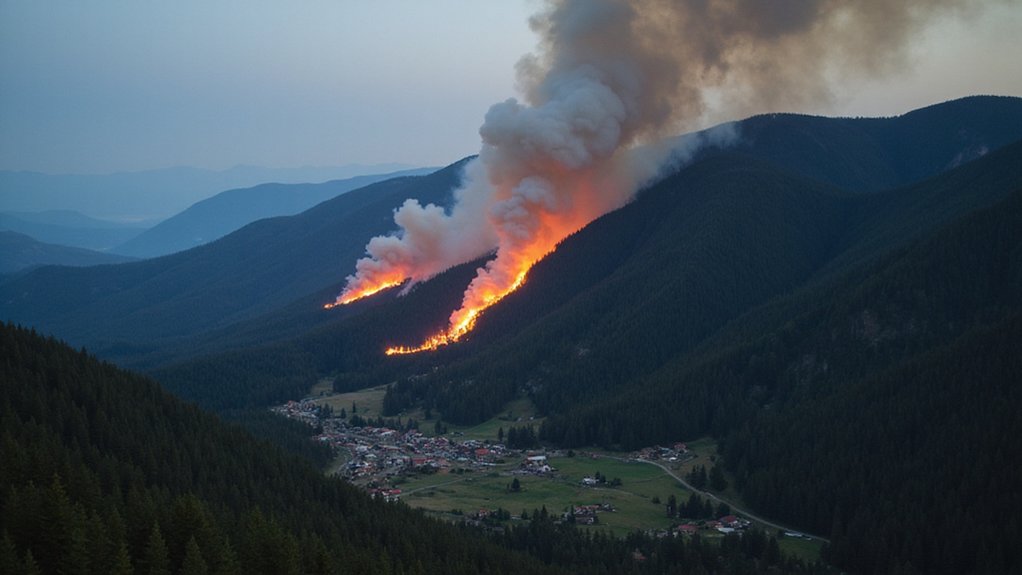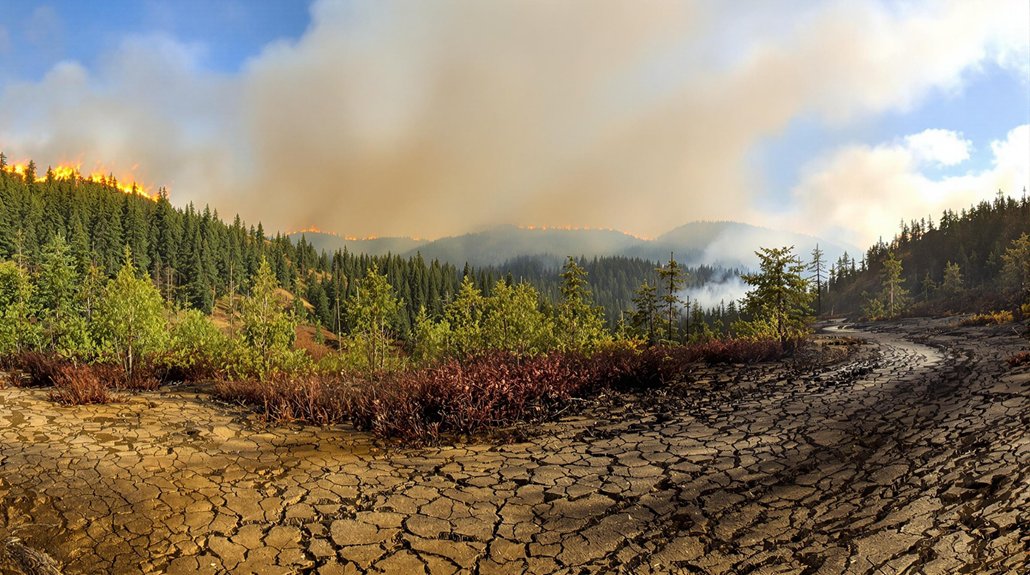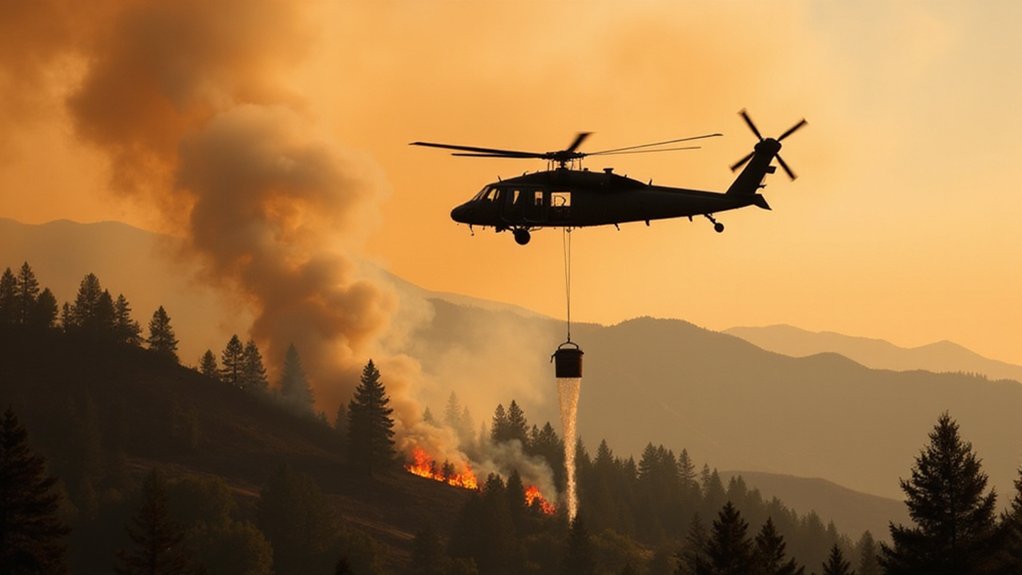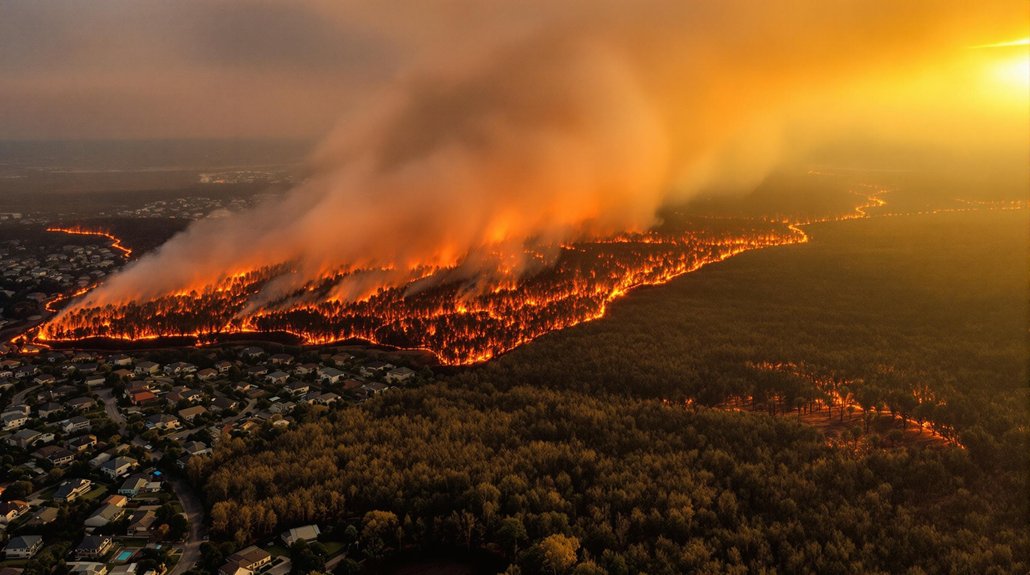The Trump administration has taken a chainsaw to Clinton-era forest protections, dismantling environmental safeguards that once shielded nearly one-third of America’s national forests. In a blow to conservationists everywhere, the rollback targets landmark measures that were implemented in January 2001, which protected a whopping 58.5 million acres of pristine forestland from road building and logging.
Remember the Northwest Forest Plan? That massive 24-million-acre conservation effort across Washington, Oregon, and northwest California? Yeah, it’s on the chopping block. The plan, implemented in 1994, was kind of a big deal – it ended clear-cutting practices that had been ravaging old-growth forests since World War II. Not anymore, apparently.
Clinton’s approach wasn’t exactly subtle. His administration went big – protecting more land in the continental U.S. than any president since Teddy Roosevelt. The protections banned roads and logging in designated areas, safeguarding water quality and wildlife habitat. Scientists actually had input back then. Imagine that.
The Northwest Forest Plan specifically excluded logging on 18.8 million acres to protect endangered species like the northern spotted owl and various salmon populations. The plan was designed as a science-based strategy to withstand the legal scrutiny that had previously halted timber sales due to environmental violations. The plan set reasonable timber production targets at 1.2 billion board feet annually. Balance. That was the word back then.
Trump’s team claims the rollbacks are necessary to combat wildfire threats. Because nothing fights fires like more logging, right? Never mind that Clinton’s approach involved extensive stakeholder collaboration during his famous Timber Summit, where he spent eight hours with over 50 representatives from all sides of the issue.
These Clinton-era protections weren’t created in a vacuum. The Colorado Wilderness Act of 1993 designated 612,000 acres as protected wilderness. This legislation banned mechanized traffic in these areas to preserve their natural state. Other legislative measures focused on forest conservation and maintaining ecological balance.
Globally recognized as a model for ecosystem conservation, Clinton’s forest protection strategy prescribed century-scale restoration to recover damaged ecosystems. Environmental experts note that protecting forests is critical for climate stability, as forest preservation directly contributes to reducing the fossil fuel emissions that drive global warming. But who needs century-scale thinking when you’ve got quarterly profits to worry about?
References
- https://clintonwhitehouse5.archives.gov/WH/new/html/Fri_Jan_5_151122_2001.html
- https://clinton.presidentiallibraries.us/exhibits/show/green-building/protecting-wilderness
- https://clintonwhitehouse4.archives.gov/CEQ/earthday/ch13.html
- https://www.earthisland.org/journal/index.php/articles/entry/bill_clintons_visionary_northwest_forest_plan_is_on_the_chopping_block/
- https://historylink.org/File/23146
